Dee Estuary Birding
Monthly Newsletter...
February 2021 Newsletter
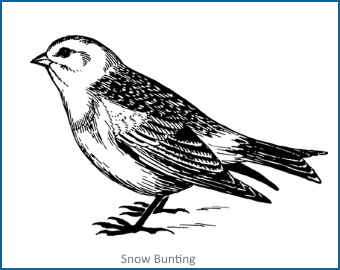
Species Spotlight - Snow Bunting
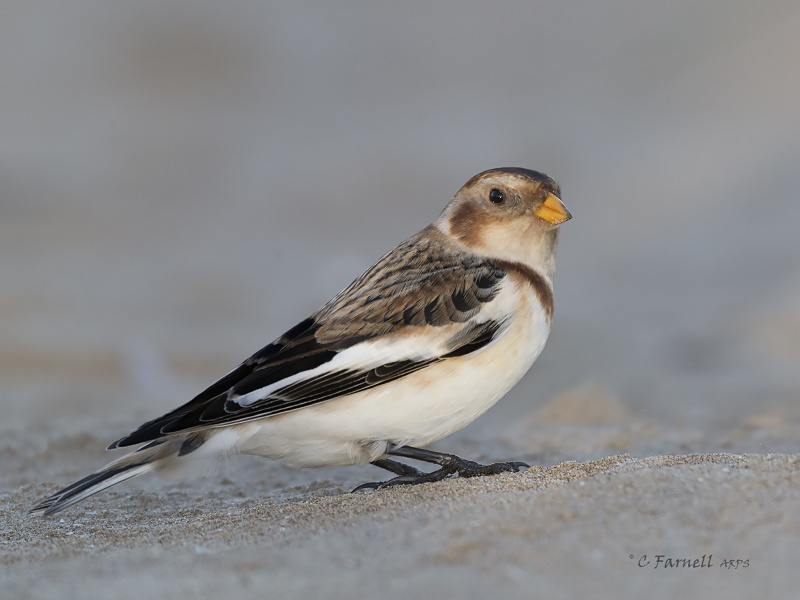
The arrival of eight Snow Buntings along north
Wirral on December 27th 2020 caused some excitement as this was the
largest
flock seen here since nine on November 3rd 2003, and those ones had
only stayed
one
day. Four arrived at Little Eye on the 26th and when four were
then spotted on the embankment around Leasowe Lighthouse on the morning
of
the 27th it was assumed they were the same birds - until an email drops
into my inbox in the afternoon to say the Little Eye birds were still
there! There were still some who thought we were seeing one highly
mobile flock of four but by the 28th we had all eight at Leasowe to
remove all doubts. They spent much time on Hoylake Shore where the new
proto sand dunes were very much to their liking.
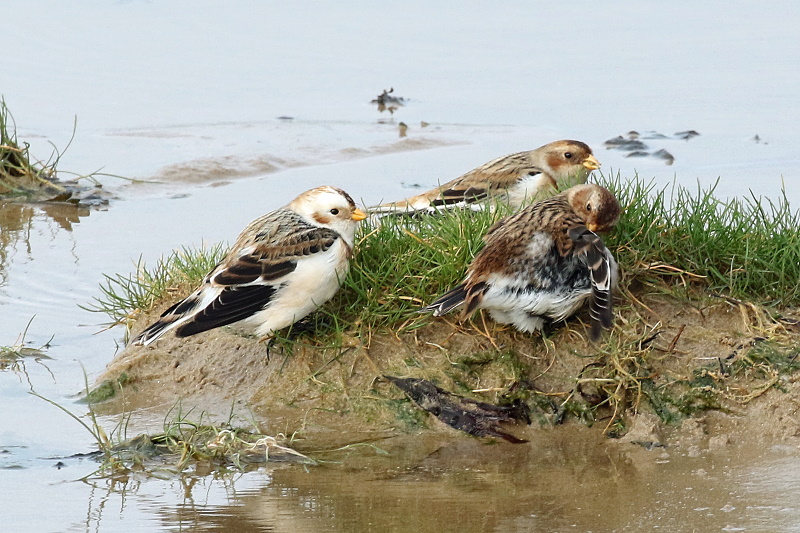
Eight may not sound very many but most records these
days are of just one to three birds and usually they don't stay more
than a few days, but as I write this these ones have already been here
for
well over a month. To put this flock into context I have plotted the
two bar charts below which show the annual max, the one for the English
side of the estuary is complete and goes from when the first Cheshire
Bird Report was published in 1964 to the present day. The bar chart for
the Welsh side of the estuary is unfortunately incomplete for various
reasons, but I have included all the data for years I do have records
for.
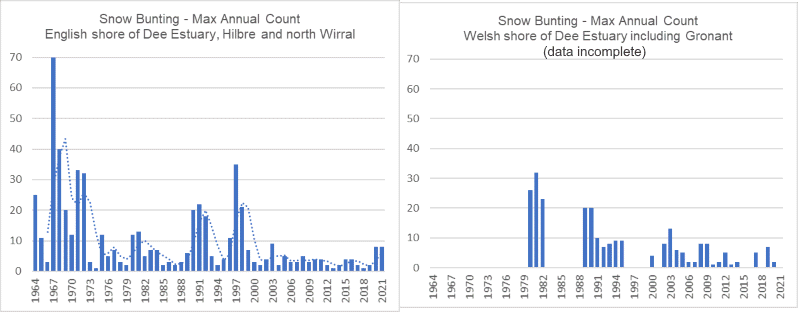
Note the trend line (dotted line) in
the left hand chart which is a three year running average, intriguingly
it suggests a cycle with peaks every four to six years. No idea what
would cause such a cycle or if it's statistically valid, but
fascinating nevertheless.
One thing we can say is that we used to get a lot more Snow Buntings
than we get now. Going back prior to 1964 Coward and Hedley Bell give
the impression that before the mid-20th century numbers were not that
much higher than they are now but there was then a significant increase
in the 1950s. 30, at West Kirby in October 1953, were 'many more than
previously reported'. But it was the winter of 1959-60 which was
exceptional with a flock of 98 on the west side of Wirral and around
Hilbre in December, there then followed a large influx in January when
a remarkable 450 were counted - what a sight that must have been! Snow
Bunting flocks are usually of around a max of 30 birds, with flocks up
to 100 much more unusual but mega flocks of several 100 are very rare
and this might well have been the largest flock ever recorded in the
Liverpool Bay area. In the 1960s Leasowe shore consisted of sand
dunes running down to the beach and any sea defence was rudimentary.
The Snow Buntings found the area very attractive and reached a peak of
70 in December 1967. Flocks of over 30 were still present there in the
early 1970s but then in 1973 the Bird Report compiler bitterly writes
".... three at Leasowe Dunes on December 6. The latter locality, where
this species has wintered for a number of years, is being 'developed'
and 'tidied up' so that its attraction is rapidly being lost...". NONE
were seen there in 1974 although by the early 1980s some had returned
with 12 in 1980 and 13 in 1981. But it must have been shortly
after this that the embankment was built along that stretch and there
were no further records from there for several years.
Numbers increased again in the 1990s and all the
largest
counts for that decade came from Hilbre with a very respectable maximum
of 35 on
December 20th 1997. Over the years Snow Buntings have been regular at
Hoylake, Red Rocks and West Kirby up to the present day, and, although
not annual, Snow Buntings are recorded at
Heswall every two or three years, six were seen there in 1997 with ones
and twos since.
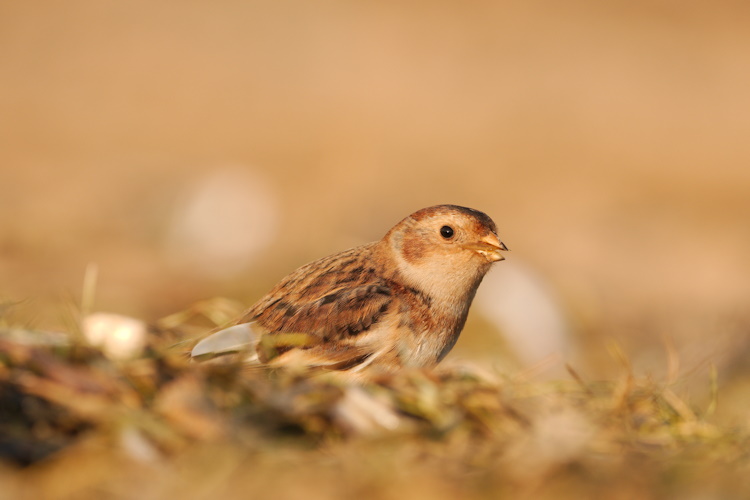
On the Welsh side of the estuary the extensive beach
and sand dunes which run from the RSPB reserve at Point of Ayr to the
Little Tern Colony site at Gronant is the best place to see Snow
Buntings in Wales. Writing in 1994 Lovegrove
said flocks of up to 30 were regular there and that was
certainly the case in the 1980s as shown in the bar chart. Numbers have
been much lower this century although I'm sure this extensive area is
under-recorded in winter with birds ranging over a wide area. Snow
Buntings do turn up along the Welsh coast in the Dee Estuary itself and
there
have been several records from Flint and Connah's Quay over the years,
and even one at Shotwick
Boating Lake on the very early date of September 20th in 2008.
The reason for the decrease in numbers of Snow Buntings this century is not clear, there has been no indication of any significant drop in numbers of the population as a whole. It may well be a combination of factors including tidier and busier beaches, but the main impact is most likely global warming with birds staying nearer their breeding grounds. Certainly many Snow Buntings breeding in Iceland have always been sedentary and it is not surprising more now stay there rather taking the long flight to the British Isles.
First Arrival Dates
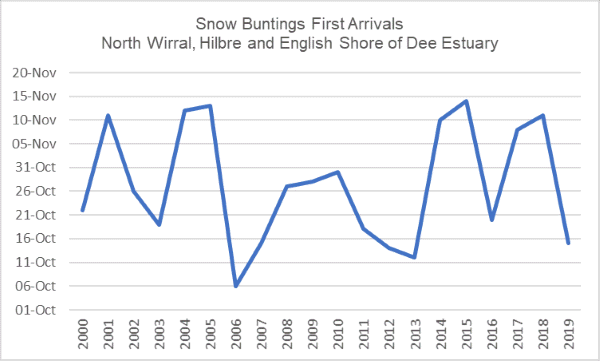
Most autumns the first arrival dates range between mid-October and mid-November. I would guess that if you did an analysis of average first arrival dates they may well be later this century than last, but whether that is due to global warming or just that with much smaller numbers involved the chances of the first one not arriving until November is greater remains unknown. Interestingly, the year before this graph, in 1999, there was a very early record of a male at Hilbre on September 23rd which I think is the earliest ever recorded in Cheshire and Wirral. I haven't done a similar graph for the spring as dates for the last departing birds are so varied and some years no birds at all have been recorded in the second half of winter, including 2016, 2018 and 2019.
Annual Distribution
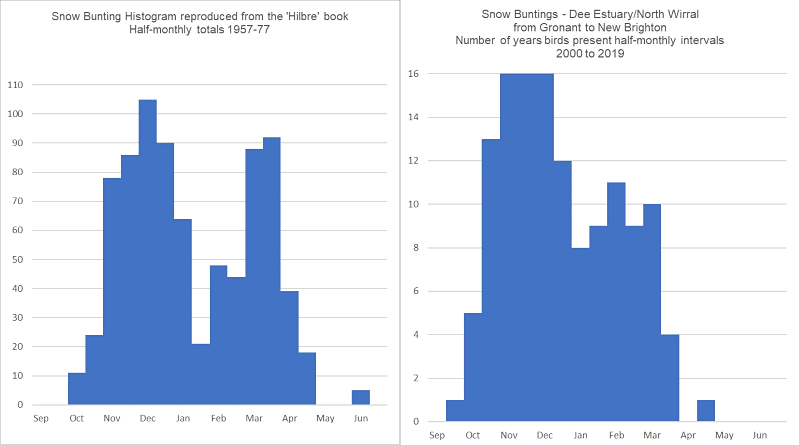
These two graphs above show the annual distribution
over two time scales as shown. Craggs,
in his Hilbre
book says about the Snow Bunting histogram (reproduced in the left hand
graph) - "There is some suggestion, from the histogram, of two passage
peaks but the numbers involved may be too small for certainty". With
numbers now even smaller and with the Bird Reports often vague about
exactly how many birds were involved and on exactly what dates I've
made a histogram simply showing when birds were present between 2000
and 2019 in half monthly intervals, and was somewhat surprised how
similar the two histograms turned out.
There is a definite autumn passage which is well
documented to take place across the country, but on the Dee Estuary it
appears to occur about a month later than elsewhere, I wonder why that
is? There then appears to be a mid-winter lull before a less pronounced
spring passage. Note that the record in June in the Hilbre histogram is
one male that was seen over five days in 1969. What it was doing there
at that time of year is anybody's guess but lone males in June are not
as rare as you might think and in 2020 singles were at Kent, East
Sussex and Durham.
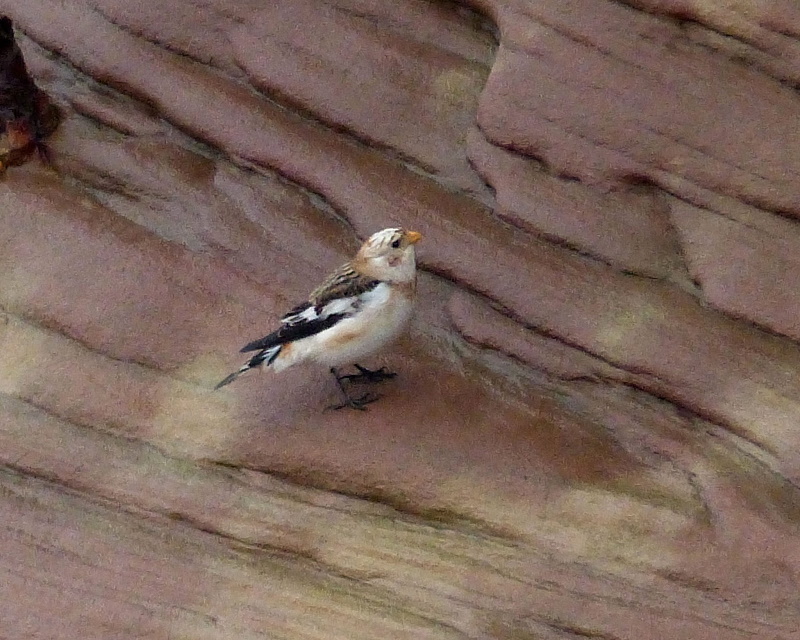
Origins and sub-species
As the peak on the Dee Estuary and north Wirral
occurs in late November and December
this suggests it is birds which have already spent some time in this
country
and are flying south from Scotland and/or flying across from the east
coast of England where the bulk of this country's Snow Buntings
over-winter. The fact that many then move on suggests that they are
dispersing around the coastline, and they can turn up just about
anywhere on the coast of the British Isles, or perhaps they are moving
on
to the Netherlands and the north coast of France which ringing has
shown where many birds passing through the UK end up.
The Snow Buntings which visit the UK consists of two
sub-species Plectrophenax nivalis
insulae and the nominate race, Plectrophenax
nivalis nivalis.
Birds of the insulae
sub-species all breed in Iceland and probably around 80% of the UK's
over-wintering Snow Buntings come from there and their presence has
been confirmed by ringing. The nivalis
sub-species breed in Scandinavia, Greenland and across northern North
America. We know they come to the UK as both nivalis and insulae can, with experience, be
separately identified in the field. Circumstantial evidence suggests we
get nivalis
from both Greenland and Scandinavia but nobody really knows,
unfortunately, even with over 60 years of effort, ringing tells us
virtually nothing with just one ring
recovery from Norway and one from Greenland. This would be a nice
colour ring project for somebody to take on in the future.
Allan Conlin is lucky enough to live just a few yards from Hoylake beach where the eight Snow Buntings spent most of January. He was able to spend a lot of time studying the flock trying to assign them a race and also sex and age them - a task which turned out to be quite a challenge. Below Allan goes into some details including providing three annotated photographs of some of the Hoylake flock:
'Although I was not able
to race, sex and age them all with 100% certainty there appeared to be
three males and five females in the flock, and six were nivalis and
two, one male and one female, were insulae.
"Snow Buntings show a degree of variability within and between races
and the annotated pictures are done within the boundaries of current
knowledge which is ever advancing." Some birds are difficult " to do"
whilst others are more straightforward. The important thing to take
away is that nivalis has a
frosty mantle contrasting with the scapulars and a white rump overlayed
with ginger whilst insulae
has a mantle colour similar to the scapulars thus no contrast. Also the
rump of insulae has a dark
ground colour overlayed with ginger and black feathers.
Sexing should be straightforward as the smaller coverts such as median
and lesser are mainly white with very small black centres indicating a
male whereas females have principally black median and lesser coverts
with broad white fringes and tips. The black centered scapulars are
broad and rounded on males whilst females are narrow and pointed (see
annotated photos).
Snow Buntings are a stunning winter addition to our beaches and should
be enjoyed for being Snow Buntings however an added interest is their
area of origin that being Iceland / Scotland, Scandinavia or Greenland.'
Allan Conlin
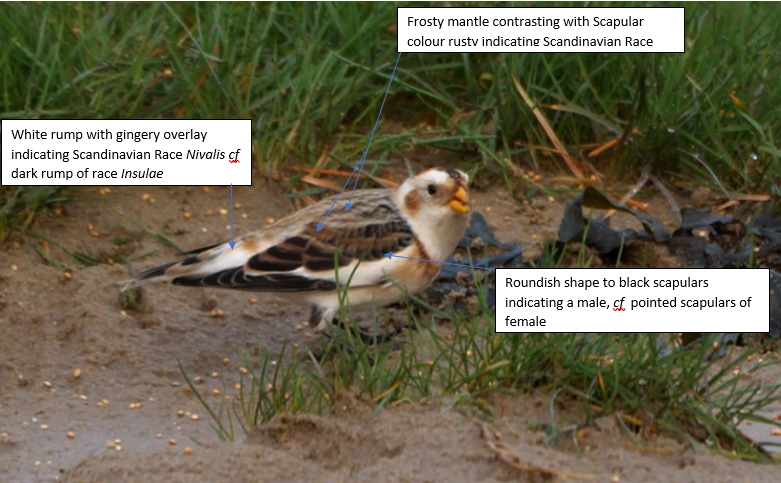
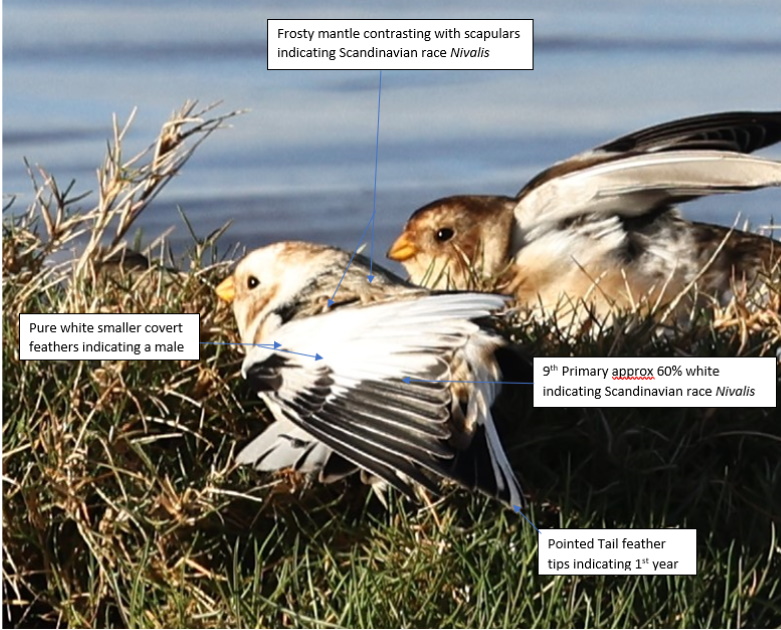
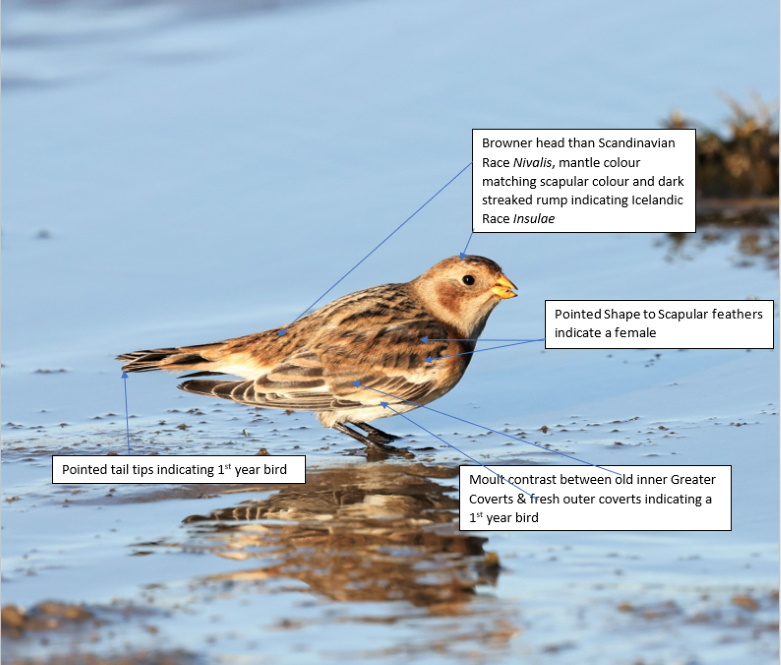
References:
1. Cheshire Bird Reports and Cheshire and Wirral Bird Reports, 1964 to 2019.2. Clwyd Bird Reports and
North-east Wales Bird Reports, various between 1980 and 2019.
3. BirdGuides latest
sightings, https://www.birdguides.com/sightings.
4. Lovegrove et.al.,
Birds in Wales, T & A D Poyser, 1994.
5. J. D. Craggs, Hilbre
The Cheshire Island, Liverpool University Press, 1982.
6. K.W. Banks et.al., Origins, population structure and movements of Snow Buntings Plectrophenax nivalis wintering in Highland Region, Scotland, Bird Study (1991) 38.
7. BTO Migration Atlas, 2002.
8. Ringing and Nest Recording Report - Summary of all Recoveries for Snow Bunting, BTO (2020).
9. Records sent to and published in http://www.deeestuary.co.uk/.
10. Martin Garner, Winter (Challenge Series), Birding Frontiers, 2015.
11. R.D. Smith, Age determination, wing-feather colour and wing-length change in Snow Buntings Plectrophenax nivalis, Ringing & Migration Vol 13, 1992.
12. Ringers' DigiGuide, Snow Bunting Plectrophenax nivalis- sexing
autumn.
https://ringersdigiguide.ottenby.se/species/plectrophenax-nivalis/sexing/
Richard Smith.
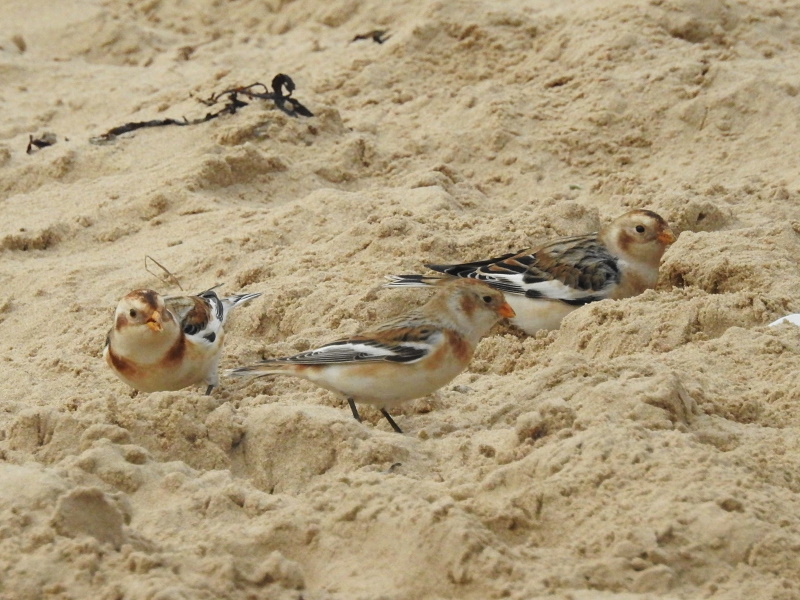
Colour Ring Report
Knots
A new Photographic
Guide to Colour-ringed Red Knot has been published which should
prove very useful to all colour ring enthusiasts - Click Here to download it (PDF File).
Also for those wondering what the Dutch ringing codes for waders such
as N8RYYN and Y4RNRR actually mean here is a guide to download - Click
here (PDF file).
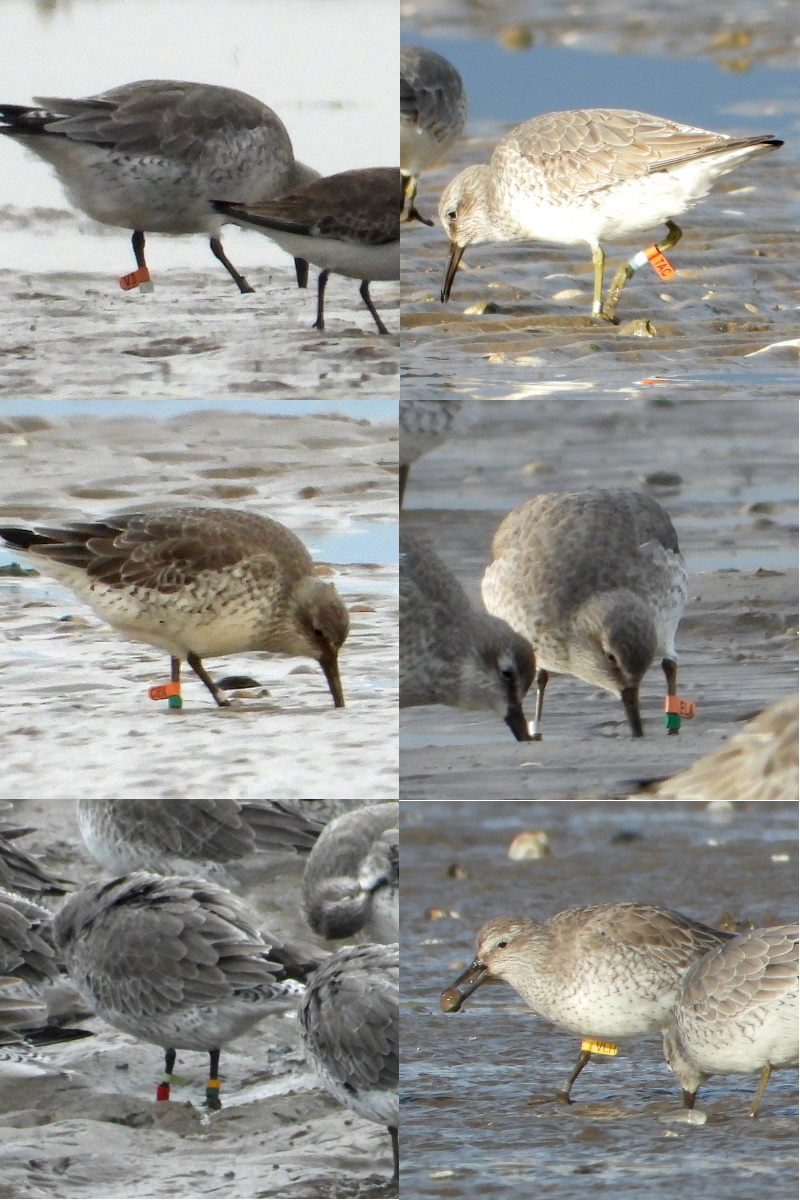
This winter has been particularly good for Knots and we've seen a lot
with colour-rings including 208 records in January. After the birds
leave us in April I shall do a summary of the whole autumn/winter but
in the meantime here are six which have shown some interesting
movements.
Orange flag V3 over
pale blue (photo top left).
Ringed in September 2017 near the Alt Estuary. It was recorded at both
Formby and Thurstaston in the winter of 2017/18 before starting to move
north in April, seen at Leighton Moss in April, then south-west Iceland
in May. It was back, at Southport, in August 2018 but then went missing
for almost a year before turning up at Formby in late July 2019. It was
early 2020 before it turned up again at Heysham and then Ainsdale. It
returned to Ainsdale/Southport in August and October 2020 before being
seen again at Heysham on Nov 15th, Thurstaston on Nov 27th, Meols on
Dec 3rd and back at Heysham on Dec 16th.
Orange flag TAC
over pale blue (photo top right).
Part of a catch which included several juveniles, two of which have
subsequently turned up in France.
Ringed in September 2020 at Ynyslas, Cardigan Bay. Having sampled the
Dee Estuary in November it decided it preferred life back in Wales
where it was recorded three times on the Teifi Estuary in January 2021.
Orange flag CEX
over green (photo middle left).
Ringed with a metal ring in Beaumaris, Anglesey, in Jan 2010 before
being recaptured in March 2018 near the Alt Estuary when it was fitted
with an orange flag.
After a couple of records in the Liverpool Bay area the following
winter it was next spotted at Findhorn Bay, NE Scotland in mid-March.
The winter of 2019/20 again saw it at Crosby and Thurstaston, This last
winter it was recorded at Seaforth in October followed by several
records at Thurstaston and Meols. In January 2021 it was spotted at
Bangor harbour on the Menai Straits, just a short distance fro where it
was ringed eleven years ago.
Orange flag ELA
over green (photo middle right).
Ringed in March 2018 near the Alt Estuary.
This must have been an immature bird as it spent the following June in
Morecambe Bay before hopping over to the Irish sea in July when it was
seen at Dundalk Bay. Having spent the following winter (2018/19) in the
Dee
Estuary it again turned up at Dundalk Bay in November 2019 before
flying back across to the Irish sea to the Dee for the rest of the
winter. There have only been two sightings this last winter (2020/21)
of this bird and both were in January, at Thurstaston and West Kirby.
L3RRYG (light
green over red over red/yellow over green) (photo bottom left).
Ringed in August 2011 on the island of Griend in the Dutch Waddensea.
Initially just a very few records for this bird - at Spurn, Yorkshire,
in August 2013, back at Griend in April 2014 before turning up at
Southport in February 2016. Our first view of it was in January 2019 at
Thurstaston. It was then spotted among the record number of Knot at
Snettisham (140,000) in October 2020 before making it's way back to
Thurstaston in November 2020.
Yellow flag VLH
(photo bottom right).
Ringed in the far north-west corner of Iceland whilst on passage in May
2014. It has been spotted twice more at the ringing location and on
almost identical dates in the third week in May - in 2015 and 2018.
This bird makes it's way to the Dutch Waddensea to moult after breeding
where it was seen in the autumn of 2016 and 2017. Our first record of
it on the Dee Estuary was in February 2018, it was at both Thurstaston
and Crosby the following winter (2019/20) and this last winter just the
one record, at Thurstaston in November 2020.
Herring Gull
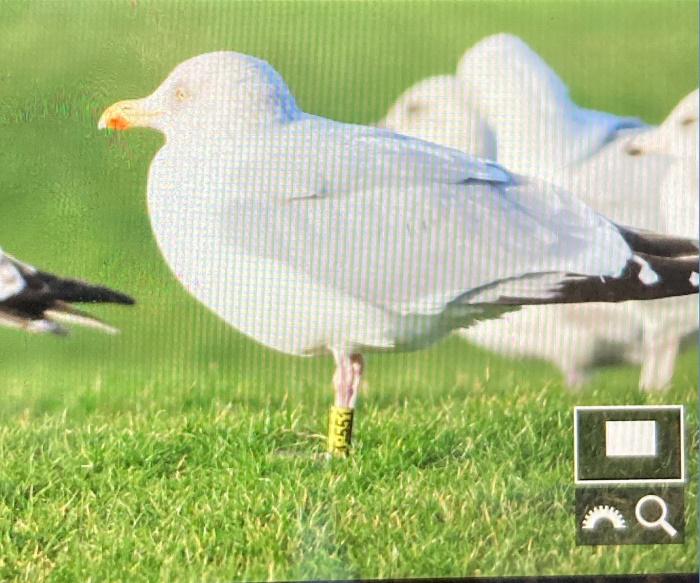
T:551 - black on yellow ring, ringed as an adult male.
Ringed at Medicine Well, Montrose, Scotland on 24/5/2012.
Recorded:
Moore Nature Reserve, Cheshire, in January 2013.
Crosby Beach in November 2013.
Richmond Bank, Mersey estuary, in February 2014.
New Brighton in August 2015.
Hoylake in November 2015.
New Brighton in October 2106.
Montrose in May 2017.
New Brighton in February 2018, September 2018 and January 2021.
Black-headed Gull
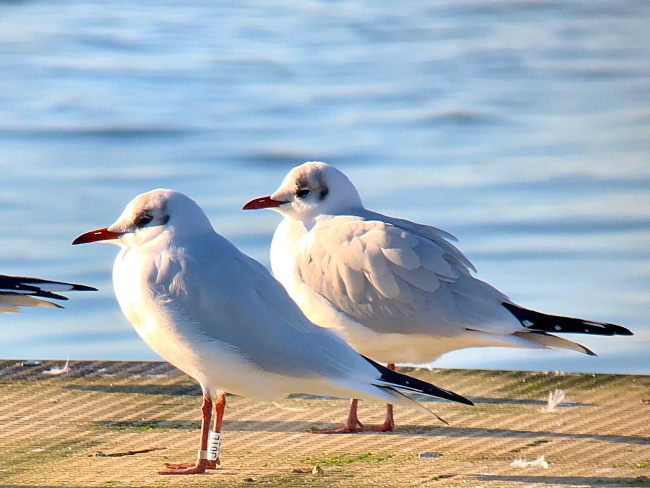
Ringed in Oslo on May 8th 2013.
This bird has been recorded every spring and summer back at Oslo since being ringed, including April and June 2020.
Recorded at West Kirby in January 2020 and feeding in a muddy field in Pensby on January 28th 2021.
Oystercatcher
T38 - black on white ring.
Ringed at Stonehaven, 15 miles south of Aberdeen, on 1/7/2015.
Recorded at Thurstaston on 24/1/2021, no other records.
Colour-rings were recorded by Richard Smith, Steve
Hinde, Steve Williams, Richard Ashford and Sean O'Hara.
January Bird News
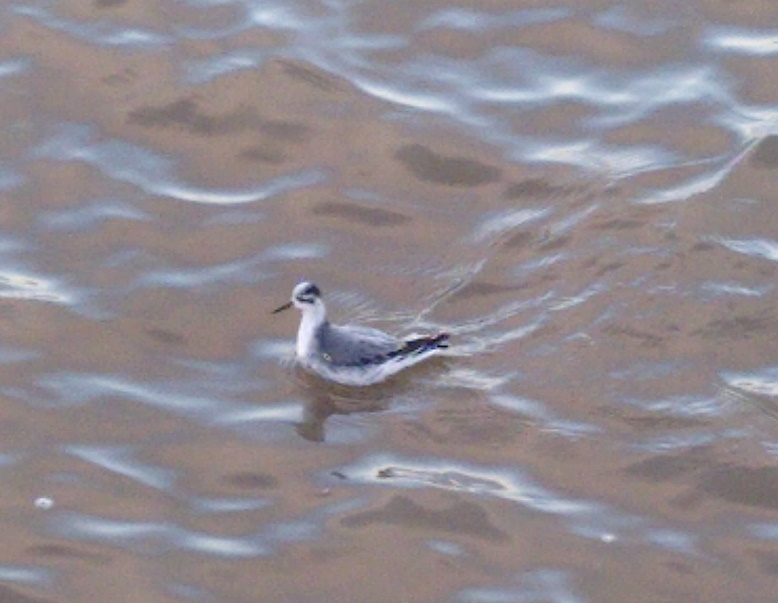
A Grey Phalarope on the Welsh shore near Flint was a nice surprise on
the 3rd, over-wintering records are rare.
It was good to see a good number of duck on West
Kirby Marine Lake with a maximum of four Goldeneye, 14 Red-breasted
Merganser and 16 Goosander. It was 2015 since we had than many
Red-breasted Mergansers and the Goosanders reached a record high in
December 2020 with 17. We've also had good numbers of duck off shore
with a reported 20,000 Common Scoters seen from a boat out in Liverpool
Bay but a bit nearer inshore have been a probable Black Scoter as well
as a couple of Velvet Scoters and a Long-tailed Duck.
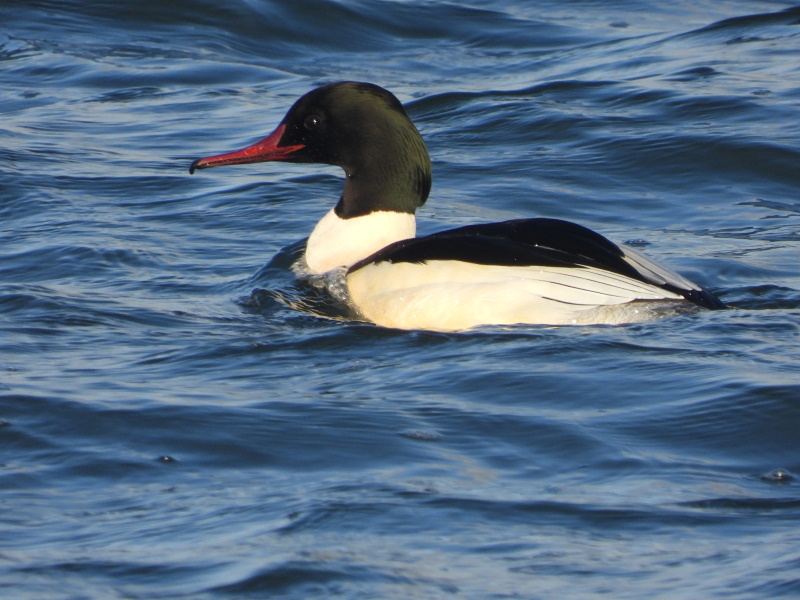
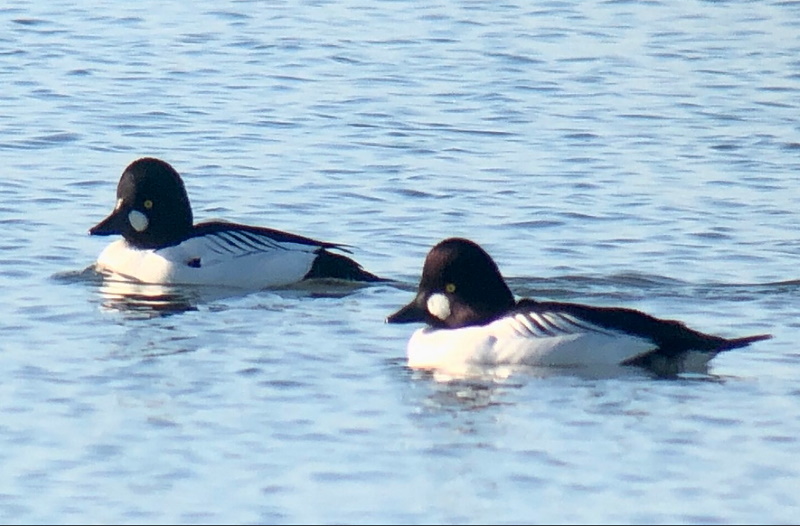
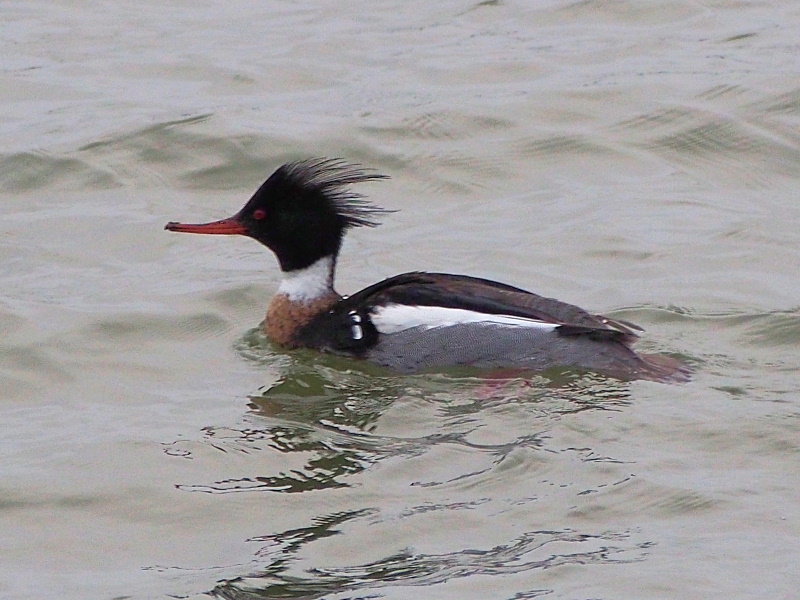
Purple Sandpiper numbers on Hilbre having been
dropping since the 1970s so it was good to see a roost of 18 on the
island, the highest since 2013 (20). At least eight have been at New
Brighton.
A couple of Cattle Egrets have been regular around
the Puddington and Burton area and there must be a good chance they
will stay to breed again. A Bittern has been seen regularly coming into
roost at dusk at Neston Reed-bed, perhaps they will also breed on the
Dee Estuary one day.
As detailed in the above article eight Snow Buntings have been present all month, they love the the proto-dunes now forming at Hoylake and lets hope the 'tidy brigade' don't have their way. As local resident and keen birder Jane Turner put it very nicely "This is the first winter in the last 20 I haven't had to deal with a sand-blow. Beautiful natural dunes are forming & the wildlife & passers-by are noticing. Only the ecologically or financially illiterate would try & reverse this natural formation of a rare habitat."
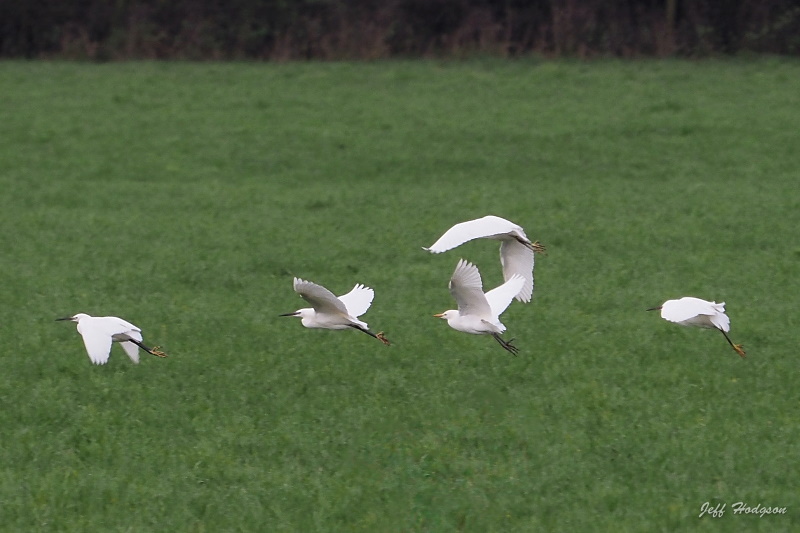
What to expect in February
There will be some very welcome first signs of the coming spring with the woods full of bird song on mild days, the first returning Avocets, gulls such as Mediterranean starting to show their breeding plumage and even the possibility of a very early spring migrant such as a Sand Martin. Stonechats are another species which come through here in good numbers in late winter with north Wirral a good spot to see them.
On the estuary we often get a late winter influx of
Short-eared Owls which have been very thin on the ground so far this
winter, the high tides at the end of the month may be a good time to
see them. There will be plenty of waders around still and, again, a
late winter influx of Dunlin can be expected with spectacular views of
a thousand or more to be had at high tide on the rocks at West Kirby
Marine Lake as well as the usual high tide roosts.
Out to sea Common Scoters will be starting to move
north after spending the winter off southern Europe and Africa, if the
weather is calm we could see thousands on the sea out in Liverpool Bay.
Also out there are Little Gulls although we are only likely to see them
if we get a storm to blow them in to the shore - like last February
when we had storm Ciara and a 1.5m storm surge which flooded the
marshes right up to Burton Point!
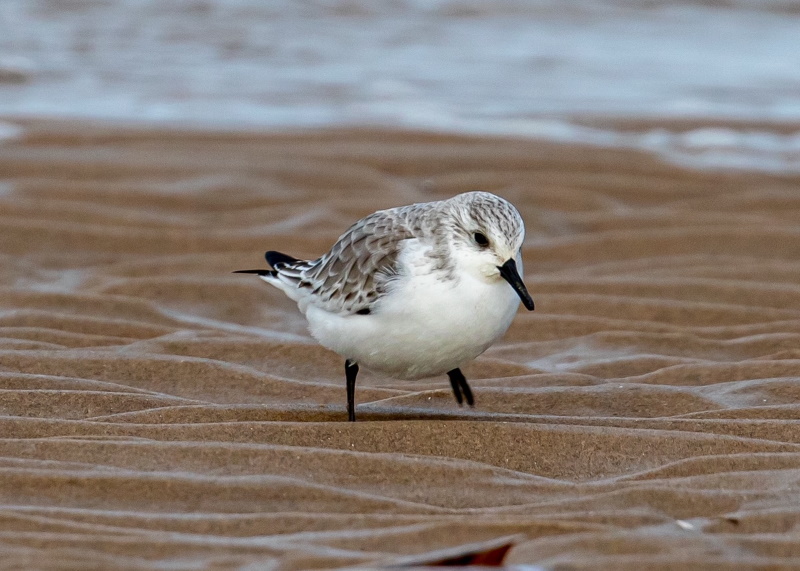
Forthcoming Events
February and March Highest Spring Tides (Liverpool)
Also see Tides page.
28th February, 11.52hrs (GMT), 9.7m.
1st March, 12.31hrs (GMT), 9.8m.
2nd March, 13.11hrs (GMT), 9.8m.
29th March, 12.27hrs (BST), 9.9m.
30th March, 13.07hrs (BST), 10.0m.
31st March, 13.48hrs (BST), 10.0m.